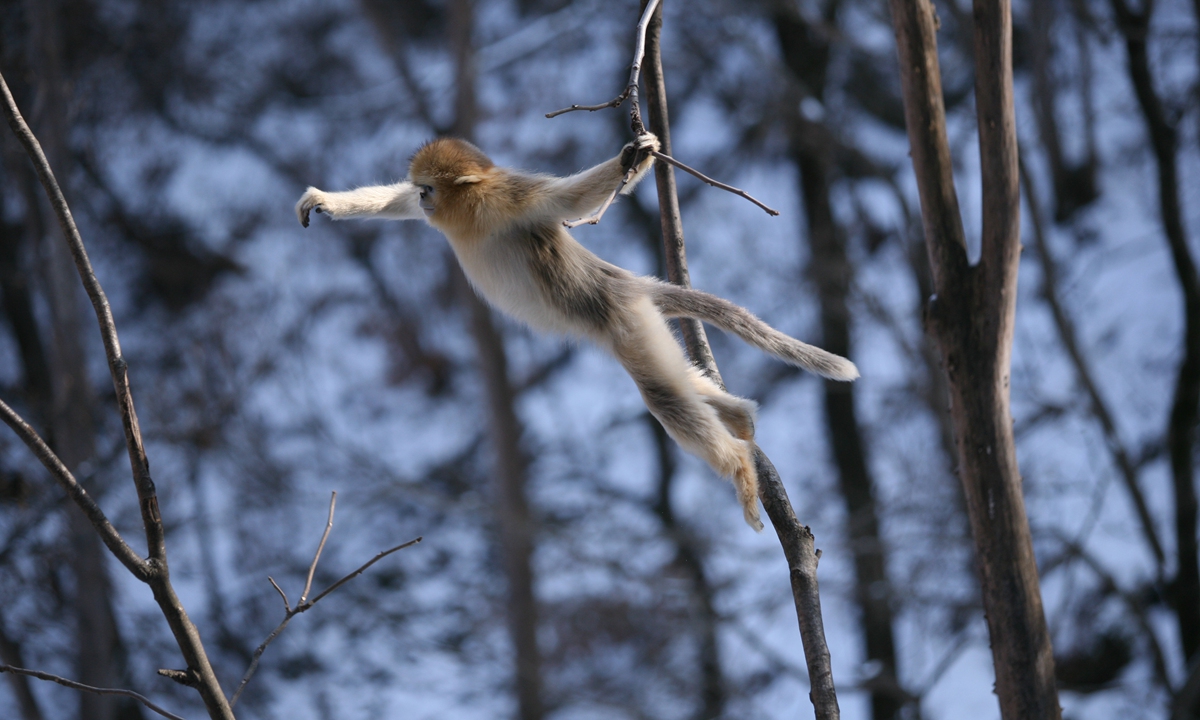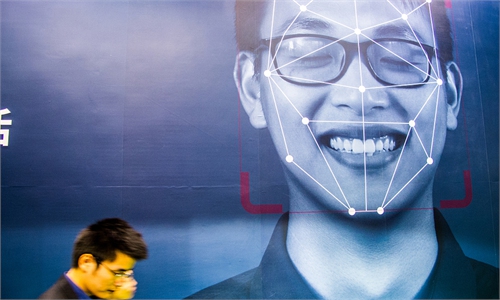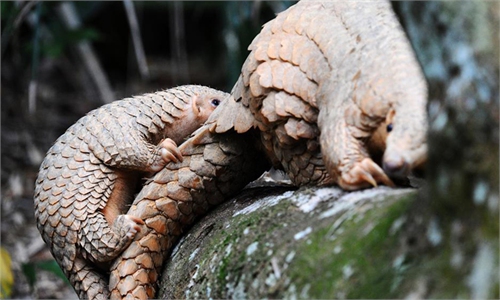SCI-TECH / IT
AI tool to tell differentials of rare animals, including pandas: Chinese professor

A golden snub-nosed monkey in Qinling Mountains in Northwest China's Shaanxi Province Photo: Courtesy of Guo Songtao
The newly-developed tool to recognize the faces of golden snub-nosed monkeys could be used in the research on a wide range of rare animals, including pandas, a Chinese professor told the Global Times on Thursday.
A research team led by Guo Songtao, professor of the School of Life Sciences at the Northwest University in China, is developing a system with facial recognition and other technologies to detect and identify the mentioned monkeys, a protected species living in the Qinling Mountains in Northwest China. Currently, there are about 4,000 golden snub-nosed monkeys living in the area.
Calling "Tri-AI," the "triplets" system can detect, track and recognize individual animals from videos and images, making all-time monitoring and behavior analysis on animals possible.
"Past studies have applied machine learning to recognize species, but accurate individual recognition is the first step to do in animal behavior analysis and animal conservation," Guo told the Global Times, noting the system enables researchers to achieve this goal.

Guo Songtao watches a golden snub-nosed monkey in Qinling Mountains in Northwest China's Shaanxi Province. Photo: Courtesy of Guo Songtao
To monitor and track a particular animal, researchers usually give radio collar, electronic tags, tattoos or crop-ear to mark an animal. But such methods often injure the animal or become ineffective after being exposed to the weather, leaving the researchers faced with the challenge to find out the one they want to track among a group of animal in the wild, Guo noted.
With the facial recognition technology applied on animals, rare animal conservation work may be easier.
According to Guo, the system accuracy reaches 94 percent for 41 primates and 4 carnivores.
To extend the applications of Tri-AI, the team also examined the system on meerkats, lions, red panda, and tigers, with all achieving identification accuracy above 90 percent.

A golden snub-nosed monkey in Qinling Mountains in Northwest China's Shaanxi Province Photo: Courtesy of Guo Songtao
"If such system approved to be effective in a wider application of wild animal monitor and examination, it may shore up a foundation for China's future species protection," Guo said. "For instance, the system can be used on panda monitoring and behavior analysis."
As China increasingly involves in using advanced technology, particularly in the burgeoning AI industry, more domestic scientists and researchers start to apply the new technologies into various subjects.
"Life Sciences naturally own abundant big data information. The cross-disciplinary research, combining AI and natural science may be a future research direction to bring revolutionary achievements," Guo suggested.
Global Times




